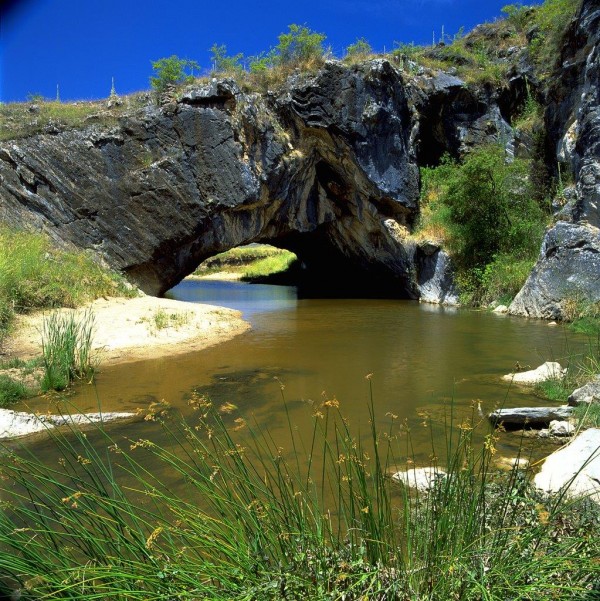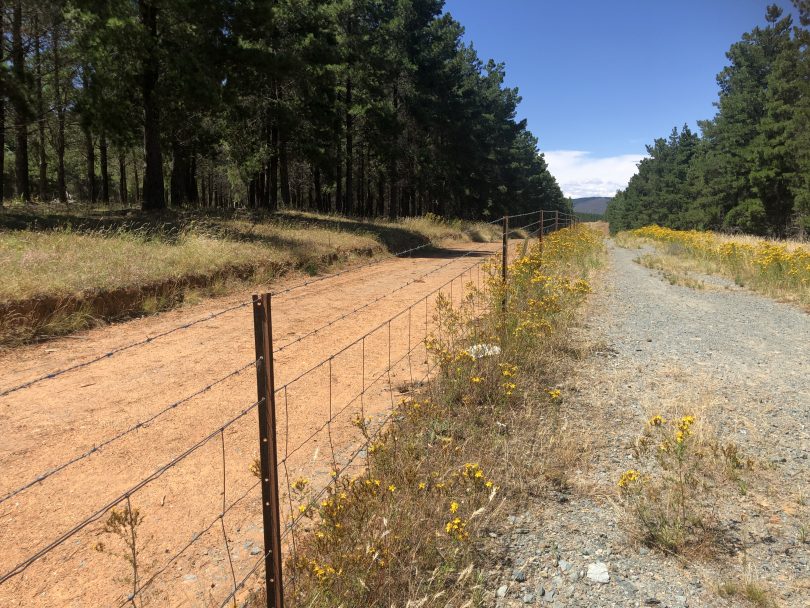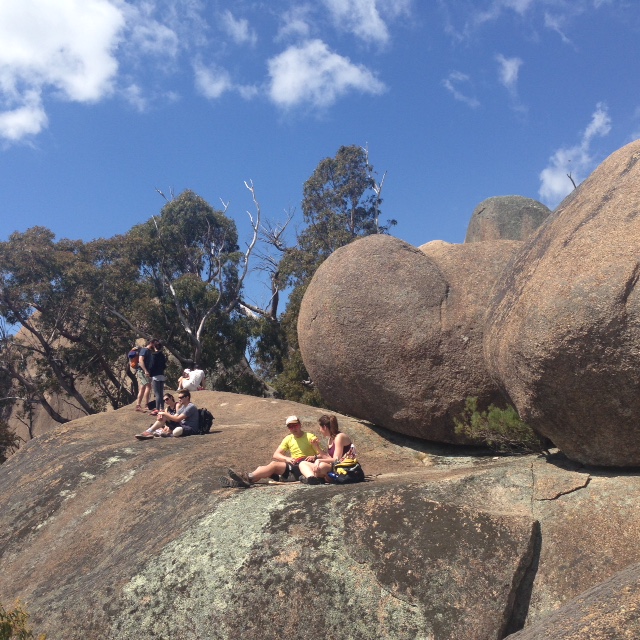
London Bridge ‘crosses’ Burra Creek near Googong Dam catchment. Photo: Jason Bernard Lewis.
It was an Aboriginal guide who first pointed it out. In June 1823, Captain Mark John Currie was passing through on a mission to find ideal land for settlement when his team came across “a natural bridge of one perfect Saxon arch, under which the water passed”.
Today, it’s known as the ‘London Bridge’, and it’s a little-known attraction along a 3.4 kilometre, two-hour walking circuit near the NSW township of Googong. The track starts from London Bridge Road off Burra Road at the site of the stone remains of an old woolshed and shearers’ quarters.
About 20 years after Currie, an Irishman, John McNamara, bought the natural stone arch and 30 acres of surrounding land for 30 pounds, making it one of the first properties in the region. He, his wife, and their 13 children owned London Bridge until 1920. After a few changes of hands, the Commonwealth resumed control in 1973 to protect the Googong Dam catchment.
But there’s a darker history too.
In January 1874, Queanbeyan Police sergeant Martin Brennan stumbled across a “veritable catacomb” containing “many hundreds of human bones and skulls, centuries old” crammed into caves near the arch. These were carried away by the bagful and pronounced by three surgeons, including the coroner, to be “the skeletons of the Aborigines of former times”. The arch may have been a sacred burial site for the local tribes.
The following year, more human bones were found in a nearby cave, this time European. But by the time the coroner came out to investigate, most of them had mysteriously vanished. Rumour has it they may have been the victims of bushrangers. But given they were buried in the Queanbeyan Pioneer Cemetery and promptly washed away by floodwaters, the bones remain a mystery.

London Bridge from the other side. Photo: ACT Government.
Subsequent archaeological digs have yet to turn up human remains, although plenty of extinct native rats, mice and small marsupials were found.
This Sunday, 5 June, marks World Environment Day, so there’s your excuse for a half-day trip to see all of this in person. The arch and surrounding caves are spiritually significant to the Ngunnawal people and fragile, so rangers advise visitors to treat the place with care.
Continue along the track for another 20 minutes, and you’ll also come across McNamara’s family home, the London Bridge Homestead, now protected by a security fence.
London Bridge is far from the only walking track in the Canberra region that ends in an iconic formation. Here are three others to try:
Tuggeranong Stone Wall
It’s a structure that might look more at place in the Yorkshire Dales than in Tuggeranong, but more than half a kilometre of hand-built stone wall snakes its way through Greenway.
The ‘Tuggeranong Stone Wall’ marked the northern boundary of Wanniassa, a land grant of 2560 acres taken by New South Wales Sheriff Thomas Macquoid in 1837. Twenty years later, the land was sold to Andrew Cunningham of Lanyon Homestead fame. The wall was built in stages between 1867 and 1875 by Chinese labourers and originally stretched for 1800 metres between the huge Lanyon and Yarralumla properties. Only 790 metres remain today.
The start of the wall can be found along Athllon Drive, with easy parking at the Lakeside Leisure Centre across the road. Look for the signage at the end of the wall. Walk back along Athllon Drive a short way until you come to a Canberra Centenary Trail sign pointing towards the Murrumbidgee River. This path eventually leads up to the wall itself.

The Glenburn Heritage Trail goes through the Kowen pine forest. Photo: James Coleman.
Glenburn Heritage Trail
This 10.4 km trail takes in historical sites from the earliest European settlers to the Canberra region. There are old homesteads, woolsheds, farm machinery, sheep yards, a small cemetery and even the remains of the old Kowen School.
The entrance is elusive and shared with the Canberra International Clay Target Club just outside Queanbeyan on the Kings Highway. A yellow gate marks the start of the walk. Small signs will guide you the rest of the way and point out the significant sites.

Gibraltar Peak is a popular destination for hikers in Tidbinbilla. Photo: Lisa Martin.
Gibraltar Peak
Gibraltar Peak, located in the Tidbinbilla Nature Reserve, is up there with Mount Taylor as one of Canberra’s best walks. There’s a good reason: the views from the top are dramatic.
The peak rises from the surrounding hills but is set apart by a cluster of enormous granite boulders. The 8.2-kilometre, 2.5-hour walk starts from the car park at Dalsetta, where you’ll also find picnic tables and toilets.
As with every other hiking adventure, bring some food, plenty of water, and if you’re on your own, let someone know where you’re going.












